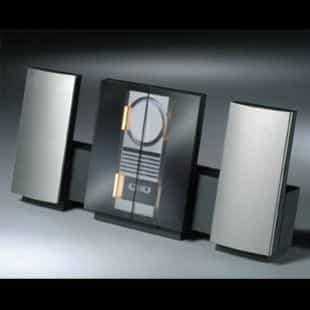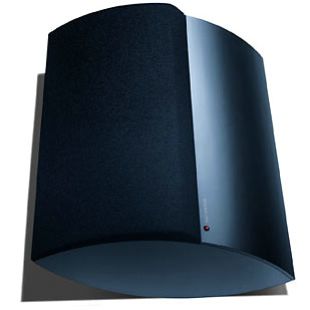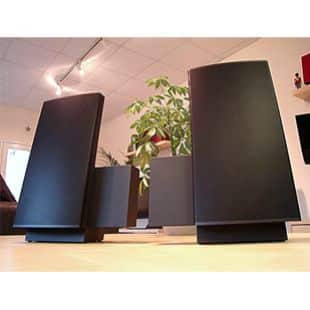BeoSound Ouverture

“BeoSound Ouverture: the design may be a Bang & Olufsen classic, but BeoSound Ouverture and BeoSound 3000 refuse to rest on their laurels. Access to new musical sources and fresh loudspeaker options ensure that the concept remains an open invitation to make something special out of your music” (B&O catalogue 2001 -2002)
This stereo has two different names: BeoSound Ouverture in Europe and BeoSound 4000 in the rest of the world. This is the only stereo system, so far, to support the new MasterLink system without any add-ons. It’s really a follow up to the Beocenter 2500 which was the first and original stereo with this somewhat different look. Along with the launch of this unit in 1991 (as the BeoSound 2500) Bang & Olufsen also started selling the new remote control – Beo4. The difference between the Ouverture and Beocenter 2500 is that the newer model doesn’t feature two-way communication and it has instead a completely new CD mechanism. It also holds some new features when it comes to the CD. But the most important difference is the MasterLink connection. With this system you can connect the unit to, for example, a BeoLab 2000 or BeoLab 3500 without any further electronics. Reach out and the doors glide quietly aside, while a gentle light spreads from within. It’s BeoSound Ouverture’s way of saying, “welcome” and part of the experience every time you put on a new tape or CD. CD player with programming, tape recorder with auto reverse, FM/AM radio with pre-set, timer function, optional Beo4 remote control operation, connections for Beolink® and headphones, optional wall bracket and floor stand. BeoSound Ouverture’s unassuming rubber key pad hides a contact foil, which, in turn, covers a matrix of vertical and horizontal cords. When a control is pressed, the cords connect and the microprocessor is activated.
Design
Music is more than just something you listen to, it’s an emotion you experience. So isn’t it time your favourite music was played on something that lets it express itself to the full? BeoSound Ouverture stands up and invites you to make something special out of your music – over and over again.
Features
Bring new life to old CDs by changing their track sequence with the Random Play function. Or programme it to skip over any unwanted tracks and to play the ones you want in the order you prefer. Transferring the music of a CD onto tape doesn’t have to mean poorer quality. The Ouverture constantly monitors and adjusts the signal during any recording to ensure a uniform sound level throughout – and will automatically stop recording when the CD finishes playing. There’s room for up to 30 pre-set stations on the Ouverture’s intelligent AM/FM radio.
So how do the sliding glass doors work?
The glass doors on the BeoSound 3000 and BeoSound Ouverture are opened and closed by steel wires driven by an electric motor via a gearbox. The motor is triggered by an infrared system that detects your approach… Why wake up to an annoying alarm clock when it could be your favourite piece of music instead? The timer function on the Ouverture can be programmed for the entire week and will automatically turn itself off again after playing for any length of time you choose.
Specials
Just raise a hand and watch as the glass doors glide silently aside. It’s the Ouverture’s way of saying “welcome” and reveals that a special experience is about to begin. Of course, a simple on/off button would do, but then what would be so special about that?
Easily Placed
It’s a dream come true – a music system that can fill your life with music without filling your home with equipment. The flat upright design of BeoSound Ouverture means that it’s slim enough to sit by itself upon the narrowest shelf or light enough to be hung directly on a wall with a pair of loudspeakers.
Use
With its mix of glass and aluminium, the Ouverture grabs the attention without shouting out loud. Its compact size and visual presence ensures that it enhances rather than dominates the surroundings in which it’s placed – which makes it the perfect audio system for the home and place of work. The stereo can also be controlled by the optional Beo4 remote control.
Mounting Options
This classic design was reincarnated over a 21 year period with various mounts and stands. Floor stands were available with a pole stand or CD and tape storage, wall mount solutions allowed for the Hi-Fi only, or with BeoLab2500 speakers until these were discontinued







